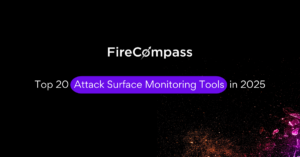Cyber-attacks and data breaches have been the top threats to organizations for the past decade. According to studies, there is a cyber-attack every 39 seconds. Opportunistic cybercriminals scan the internet for vulnerable systems and motivated cybercriminals persistently scan a targeted organization for vulnerable entry points. And unless you continuously carry out a vulnerability assessment of your systems and understand how cyber criminals operate, you will not be able to stop cyber-attacks targeted on your organization. With continuous automated red teaming, you can continuously keep an eye on your digital footprint and at the same time test all your assets.
Red teaming as a concept basically involves mirroring real attackers to find out the paths that they might take to attack your organization and launch safe attacks to your system, with one objective: assess how security measures would react to real-life cyberattacks.
To get the most out of a red teaming project, an organization must first evaluate whether it has the necessary resources to carry out the project, especially in terms of the expertise of its IT and IS teams.
If you are worried about too much manual work, then you can switch to a Continuous Automated Red Teaming (CART) platform like Firecompass to take care of this.
What Does Red Teaming Involve?

Before embarking on a red team project, you must first have to decide what your goals and priorities are. That means you may have to customize and tailor your red teaming tests to reflect your sole security concerns. You also have to specify the timelines of the project, create what-ifs scenarios, and define what constitutes the success of the project.
After all the parameters and scope of the project have been developed, your red team will now initiate their process. Red teaming tools allow you to understand the processes and techniques used by cybercriminals; it also allows you to assess how prepared your defensive mechanism is in detecting and combating cyber-attacks.
After successful red teaming attacks, the team will produce a report that shows how they broke in and out of your system. The report essentially specifies the entry points and other vulnerabilities that were potentially exploited by the red team to access your system. These vulnerabilities may include misconfigured assets, exposed cloud buckets, exposed databases, network vulnerabilities,….
With a red team cybersecurity report detailing entry points and vulnerabilities of a system, you can now go ahead and address the identified issues by first patching up the weaknesses of your system/network.
But these are all done as a part of the traditional red teaming process. Nowadays with the continuous automated red teaming platform, these steps are continuously run along with continuous recon of the digital footprint, discovering attack surface and launching safe attacks based on the scope and attack paths.
How To Avoid Cyber Attacks?
Cyber-attacks come from all sides and in all forms, and the only way to avoid being a victim is to reduce your attack surface as much as possible. An attack surface is a combination of all possible entry points and vulnerabilities in your network a cybercriminal can exploit. Think of unnecessary open ports, unsecured networks, orphaned applications, and other blind spots. With an attack surface analysis, an organization can understand risk areas, identify vulnerable systems, and reduce attack vectors.
Attack surface analysis combined with red teaming projects will help you map out vulnerabilities in your network, and to avoid being hit by cyber-attacks.
While the above measures will go a long way to protect you from cyber-attacks, it is highly recommended to switch to continuous automated red teaming platforms for the best cybersecurity assurance.
How Can Continuous Automated Red Teaming Help?
Simulated continuous automated red teaming activities will identify entry points and vulnerabilities in your system or network. Successful continuous automated red teaming activity is helpful in three folds: it helps to perform continuous recon, identify digital attack surface and prioritize risks. And since a red teaming project utilizes the same techniques, processes, and attacking tools commonly used by cybercriminals; you get a chance to devise security measures against these similar techniques. Additionally, a red teaming project is commonly carried out collaboratively with blue teams which are responsible for defending an organization from security breaches; this collaboration will enable both teams to trade their respective skills and techniques.
Conclusion
Despite hiring the best IT experts and putting in place the most comprehensive firewall measures, organizations are still facing cyber threats. The solution is a continuous automated red teaming that will allow you to stay ahead in continuously identifying vulnerabilities in your network that would otherwise be discovered and exploited by cybercriminals. More importantly, having a continuous attack & red teaming project that will continuously monitor your network, discovering and exploiting any weakness is very essential to your efforts to enhance your defensive security mechanisms.
If you are looking to make things easier and better, opt for Firecompass’s Continuous Automated Red Teaming (CART) solution.




